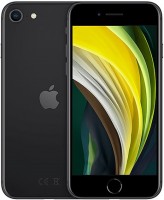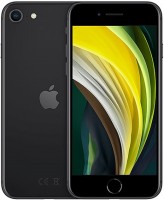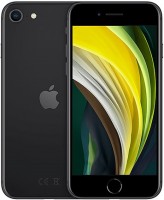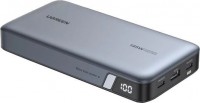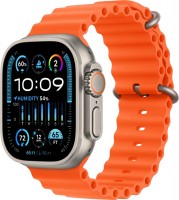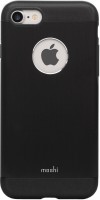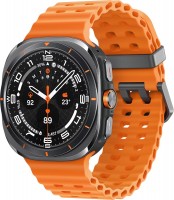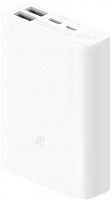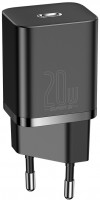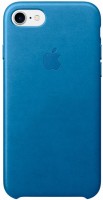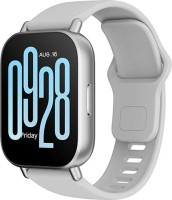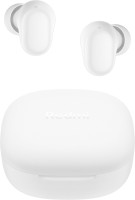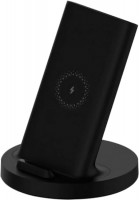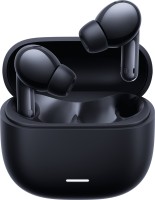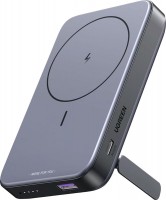Apple iPhone 8 128 GB
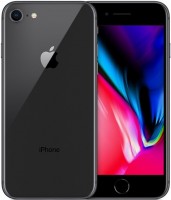 | Outdated Product Main display: display ("): 4.7; screen resolution: 1334х750; Display-to-body ratio (%): 65; OS: iOS; CPU model: Apple A11 Bionic; CPU (GHz): 2.4; RAM (GB): 2; RAM type: LPDDR4; Memory storage (GB): 128; Memory card slot: absent; AnTuTu Benchmark: 350; Geekbench: 1820; 3DMark Gamer's Benchmark: 3790 |
Apple iPhone 8 128 GB
compactNFCno microSDwater protectionfast chargewireless chargingstereo speakersno 3.5 mmultrathinno charger
Screen:4.7 ", 1334х750, 326 ppi, panel IPS
Memory size:128 GB, RAM 2 GB, LPDDR4
Camera:12 MP, 4K, stabilization, slow-mo
CPU:Apple A11 Bionic
Battery:1821 mAh
Display with pressure recognition. Waterproof IP67. The main camera with optical stabilizer and the ability to simultaneously shoot photos and 4K video. 7-megapixel front camera with Retina Flash (display as a flash). Up to 12 hours in Internet mode. Barometer
There is no 3.5 mm miniJack port (Lightning-to-3.5 adapter included). There is no slot for memory cards.
All specifications
Specifications iPhone 8 128GB
|
| ||||||||||||||||||||||||||||||||||||||||||||||||||||||||||||||||||||||||||||||||||||||||||||||||||||||||||||||||||||||||||||||||||
The information in the model description is for reference purposes.
Always clarify the specifications and configuration of the product with the online store manager before purchasing.
Catalog Apple 2025 - new arrivals, bestsellers, and the most relevant models Apple.
Always clarify the specifications and configuration of the product with the online store manager before purchasing.
Catalog Apple 2025 - new arrivals, bestsellers, and the most relevant models Apple.
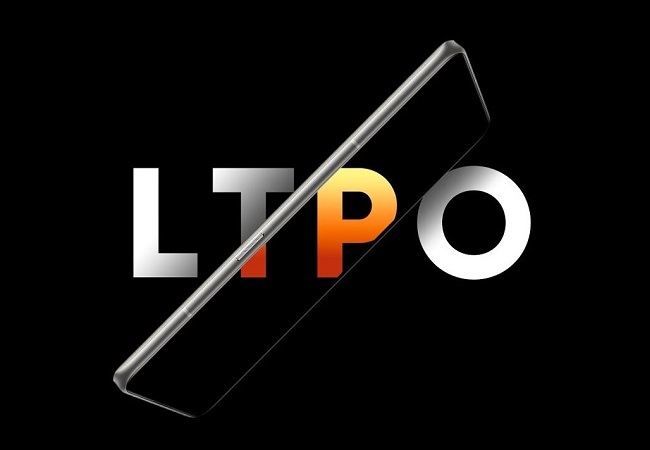
What is LTPO display in mobile technology and how does it workLet's figure out what an LTPO screen with an adaptive refresh rate is and how it differs from a regular OLED

How not to make mistake - iPhone article numbers and their decodingManufacturer’s label contains information about iPhone model, device color and memory volumes
Additional features mobile phone Apple iPhone 8 128GB:
Retina Flash
Retina Flash technology allows the user to take selfies with the front camera in low light, such as at night or in a dark room. The bottom line is to use the display to replace the traditional flash. At the moment when the user takes a selfie, the brightness of the display increases three times. Simply, the display generates the right amount of light for a high-quality selfie shot.
Augmented reality technologies and AR games
Now you can put 3D objects (eg dinosaur, animals, etc.) on your photos or videos during actual shooting. Also during the game you can interact with objects by moving the phone in space (tilt, turn, move). Play space can be created from your surroundings, which you record with your camera. For example, your table can turn into a chessboard where you and your opponent will play a game. Or a fighting game in the parking lot near your car as an obstacle.
portrait photo
During photography, both photo modules are involved. One focuses on the face, making a portrait, the second - on the background. In the future, the background can be replaced, shaded, lightened, removed (cut out) and sharpened (bokeh). The portrait itself can also be fully processed and, thanks to a huge variety of filters, is brought to your perfect. It is noteworthy that the sharpness on the face is also amenable to processing (it can be slightly shifted later).
- Taking photos while recording 4K video
- Advanced Portrait Lighting Mode
- Emoji with the ability to repeat the emotions of the owner's face (through the camera)
- Improved optical stabilization compared to iPhone 7
- Ability to shoot panoramas with a total resolution of 63 megapixels
- Possibility to place 3D objects during filming (photo and video)
- Support for AR games (games with additional reality)
Retina Flash
Retina Flash technology allows the user to take selfies with the front camera in low light, such as at night or in a dark room. The bottom line is to use the display to replace the traditional flash. At the moment when the user takes a selfie, the brightness of the display increases three times. Simply, the display generates the right amount of light for a high-quality selfie shot.
Augmented reality technologies and AR games
Now you can put 3D objects (eg dinosaur, animals, etc.) on your photos or videos during actual shooting. Also during the game you can interact with objects by moving the phone in space (tilt, turn, move). Play space can be created from your surroundings, which you record with your camera. For example, your table can turn into a chessboard where you and your opponent will play a game. Or a fighting game in the parking lot near your car as an obstacle.
portrait photo
During photography, both photo modules are involved. One focuses on the face, making a portrait, the second - on the background. In the future, the background can be replaced, shaded, lightened, removed (cut out) and sharpened (bokeh). The portrait itself can also be fully processed and, thanks to a huge variety of filters, is brought to your perfect. It is noteworthy that the sharpness on the face is also amenable to processing (it can be slightly shifted later).



